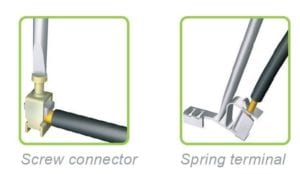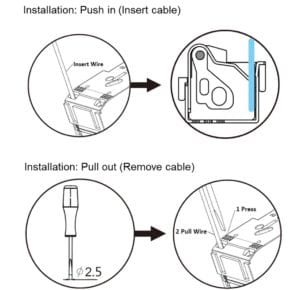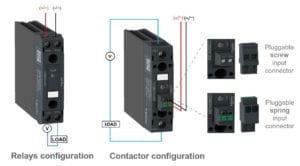
“Time is money”
I am sure this sentence resonates in many people.
Although the measurement of time is by what a clock reads, the benefits of time-savings is well beyond the simple seconds, minutes that are measured. It translates into greater efficiency and in-turn more cost savings, which are highly welcomed and pursued by the manufacturers today.
One of the biggest costs of manufacturing is labor cost. The labor costs have risen sharply over the years, putting more pressure on manufacturers to juggle between operation cost and maximizing profits. In that case, what could be the solution?
Technology is the saving grace to cut down on wasted time for repetitive processes, hence boosting labor productivity. Put it into the perspective of an OEM (Original Equipment Manufacturer): saving a minimal 5 minutes during installation for each machine will exponentially save a huge amount of time when it comes to thousands of machines.
Traditionally, many relays in the market are often designed with screw terminals. This is no surprise given that screw terminals have been around for a long time. Due to the need for screw tightening, screw terminals are highly dependent on human interaction hence making it labor intensive.
Well, fret not. Besides the standard screw terminals, Schneider brings you a variety of connection technologies in relays to save wiring time and improve efficiency.
Spring Terminals
It has a simple operation: By using a screwdriver to push the spring terminals, it opens a preloaded spring which allows easy insertion or releasing of the wire. Although a screwdriver is still required, a specified torque is not necessary for wiring hence the human factor for spring terminals is less than that of the screw terminals. Furthermore, spring terminals provides a completely maintenance free operation as there is no need to worry about screws loosening during operation and transportation. All these means lesser work and time needed for wiring.

Push-in Terminals
Technology is constantly evolving, with an increasing number of innovative terminal block designs in the market. Particularly, push-in technology is becoming more apparent in many industrial products including relays. This new wiring method allows users to simply push the wires into the terminal block for connectivity. It works similarly to spring terminals, except that you do not need a screwdriver to release the wires but with your fingers instead. Therefore, it is evident that push-in terminals require the least human interaction, which greatly reduces the workload during wiring. Due to the minimum insertion force and high pull out force for wiring, push-in terminals are ideal for many applications in environments with high vibration or harsh conditions.

Contactor Configuration
For solid state relays, the common terminal configuration is known as relay configuration: top terminals are the inputs and the bottom terminals are the outputs. Today, an alternative configuration appears and is known as contactor configuration. Both configurations are similar, except that the inputs are no longer embedded in the relay for contactor configuration. Instead, you have the flexibility to use either a pluggable screw or spring connector for the inputs.

So, what’s the beauty of contactor configuration?
For wiring, electricians can opt for the standard screw terminal for the input. Otherwise, they can consider the spring terminals, which provides more time saving during installation and maintenance. If there is an issue with the input terminals, electricians can easily switch with another pluggable input connector instead of replacing the entire solid state relay. This again saves time and cost during trouble shooting.
In the market, there are a myriad of connection technologies in relays for customer to select from. Understanding the requirements and limitations of your application will help you to select the most suitable connection technology. If you still prefer the traditional wiring, screw terminals are ideal for you. However, if you prefer quick installation and less maintenance, why not consider spring terminals, push-in terminals and contactor configuration? You can be rest assured that the wiring quality is not compromised with quicker wiring. In fact, wiring is secured than ever.
Discover Schneider Electric Relays with different connection technologies to simplify wiring and improve efficiency today. Click here to learn more!

